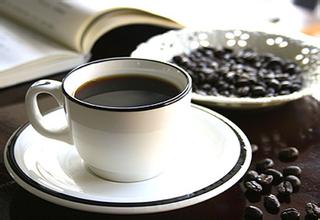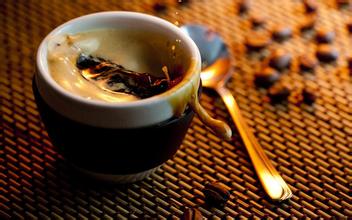Full-bodied fragrant Indonesian Mantenin boutique coffee bean flavor and taste introduction to the planting environment
According to the statistics of Indonesia's Ministry of Energy and Mines (2013), Indonesia has coal reserves of about 58 billion tons, of which 19.3 billion tons have been proven, of which 5.4 billion tons are commercially recoverable reserves. As there are still many areas with unproven reserves, the Indonesian government estimates that the total coal reserves will reach more than 90 billion tons. Indonesia has huge natural gas reserves, about 123,589 trillion cubic meters (equivalent to 20.6 billion barrels of oil), of which 2423 trillion cubic meters have been proved, mainly produced in Allen in Sumatra and Badak in East Kalimantan. Indonesia has nickel reserves of more than 5.6 million tons, ranking first in the world. Diamond reserves are about 1.5 million carats, ranking first in Asia. In addition, uranium, town, copper, Ming, bauxite, Zhong and other reserves are also very rich.
Asia is the main destination for Indonesia's coal exports, accounting for more than 70% of the total, followed by Europe and the Americas. The main export targets in Asia are India, Japan, China and so on. Indonesian coal exports to China reached 42.9 million tons in 2010, making it a major source of coal in parts of southern China. [7]
Indonesia is one of the countries with the richest biological resources in the world. According to incomplete statistics, there are more than 40000 species of plants in Indonesia, of which medicinal plants are the most abundant. The forest area of Indonesia is 12000000 square kilometers, including 11200000 square kilometers of permanent forest area and 810000 square kilometers of convertible forest area. Indonesia's forest coverage is 67.8%. Indonesia is rich in a variety of valuable tropical tree species, such as ironwood, sandalwood, ebony and sleeve wood. Indonesia has a vast sea area and a tropical climate suitable for all kinds of fish. Indonesia is extremely rich in fishing resources. Bagansia on the east coast of Sumatra is a world-famous fishing ground. [7]
Population ethnic editor
Population
Indonesia has a total population of 248 million in 2013, making it the fourth most populous country in the world. There are more than 100 ethnic groups, including 47% of the Javanese, 14% of the Sunda, 7% of the Madura and 3% of the Chinese. In addition, there are residents of more than 100 ethnic groups, such as Minangkabao and Balinese, accounting for 23%. There are more than 200 national languages, and Indonesian is widely spoken.
Java coffee beans are famous for their early Java coffee, which refers to Arabica coffee formerly grown on the island of Java. It has a strong aroma, low acidity, taste lubrication, mixed with mocha coffee, the resulting "Java mocha mixed coffee" was once popular and became synonymous with top coffee.
At that time, Java coffee sold to Europe was a very special kind of coffee. At that time, it was shipped to Europe and the United States by sailboat, and the distance was long and the speed was slow, so it took a lot of time to transport. In this case, the coffee seems to have undergone a special fermentation and has a very unique taste.
Later, when the ship replaced the sailboat, due to the shortened delivery time, people drank relatively fresh coffee beans. But people who are used to drinking Chen beans are not used to the fresh taste, so they desperately pursue old Java coffee, so that the Indonesian government and some businessmen deliberately store fresh beans in warehouses for one or two years and then sell them to consumers. In fact, compared with fresh beans, the acidity of aged Java beans is close to zero, but the flavor is more intense. Because of the long storage time, the increase in cost and the limited quantity, Java has always been a hot item in the coffee market. In the 1880s, 0 merchants deliberately tampered with some fresh Guatemalan or Venezuelan beans to imitate aged Java for high prices. It is intolerable that 0 merchants dye coffee beans to make them look more like old Java, but there is no doubt that the dyed chemicals are certainly toxic.
Java produces only a small amount of Arabica beans, most of which were imported from Africa after the rust disaster. This kind of coffee has a strong bitter taste after roasting, but its aroma is extremely light. Although it has low acidity and delicate taste, it is rarely used for direct drinking. It is often used to mix mixed coffee or to make instant coffee.

Important Notice :
前街咖啡 FrontStreet Coffee has moved to new addredd:
FrontStreet Coffee Address: 315,Donghua East Road,GuangZhou
Tel:020 38364473
- Prev

Fragrant and authentic El Salvador boutique coffee bean flavor taste introduction to the planting environment of the manor production area
Farah Bandomatti National Liberation Front (Frente Farabundo Mart parala Liberacin Nacional), the ruling party. In October 1980, the Farah Bendomatti people's Liberation Army, the National Resistance Forces, the people's Revolutionary Army, the Central American Labor Revolutionary Party and the Communist Party of El Salvador jointly formed an armed front against the government. In January 1992, the Front signed with the Government
- Next

Introduction to the aroma-rich Colombian boutique coffee bean flavor and taste manor
The National Coffee Management Association of Colombia, like the National Management Association of Kenya, is a model of coffee organization. Compared with other producing countries, Colombia is more concerned with developing products and promoting production. It is this, coupled with its superior geographical and climatic conditions, that makes Colombian coffee excellent in quality and delicious and famous all over the world. The status of coffee in Colombia comes from the following examples
Related
- Detailed explanation of Jadeite planting Land in Panamanian Jadeite Manor introduction to the grading system of Jadeite competitive bidding, Red bid, Green bid and Rose Summer
- Story of Coffee planting in Brenka region of Costa Rica Stonehenge Manor anaerobic heavy honey treatment of flavor mouth
- What's on the barrel of Blue Mountain Coffee beans?
- Can American coffee also pull flowers? How to use hot American style to pull out a good-looking pattern?
- Can you make a cold extract with coffee beans? What is the right proportion for cold-extracted coffee formula?
- Indonesian PWN Gold Mandrine Coffee Origin Features Flavor How to Chong? Mandolin coffee is American.
- A brief introduction to the flavor characteristics of Brazilian yellow bourbon coffee beans
- What is the effect of different water quality on the flavor of cold-extracted coffee? What kind of water is best for brewing coffee?
- Why do you think of Rose Summer whenever you mention Panamanian coffee?
- Introduction to the characteristics of authentic blue mountain coffee bean producing areas? What is the CIB Coffee Authority in Jamaica?

